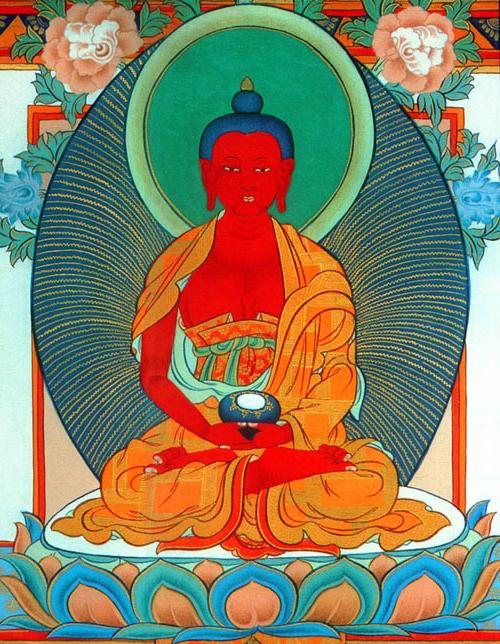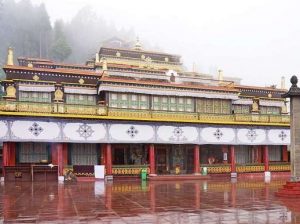
An Easy Path for Uncultured People
I first approached Buddhism as a philosophy in 1988, when I was searching for the truth about life and the universe. Over time, however, my interest changed from the mere pursuit of knowledge to thinking of Buddhism as a religion that could actually be practiced, and from an initial shallow belief, I began to develop deep faith. In all, the process took a year. First, I became fully convinced by the wisdom of Shakyamuni Buddha, as well as by his moral conduct. Second, I overcame my reluctance to accept the “concept” of reincarnation within the Six Realms. And finally, in 1989, I took Refuge and became a Buddhist.
In 1990, I enrolled in a course organized by a Buddhist association in Hong Kong, which gave an introduction to the Eight Major Schools of Chinese Buddhism. It was the first time I had learned about Pure Land Buddhism and its similarities to and differences from the other schools. My first impression was that it was the “easy path” among the Eight Schools, especially suited to people ignorant of Buddhism and with an average to low intelligence, or for slow-witted old couples in the Dharma-ending era. It appeared to stand out clearly for its simplicity, expedience, and ease of learning and practice.
Nevertheless, I thought Pure Land Buddhism was not suitable for me as I considered myself to be an intellectual, with a good memory and ability to understand. As a result, I elected to take the doctrinal approach of studying the abstruse sutras of the Faxiang (or Weishi; “Consciousness Only”), Huayan, Tiantai, and Sanlun schools, and those practices that required higher meditative states.
Venerable Master Yin Guang (1861–1941), the 13th Pure Land patriarch, once wrote: “People these days who think highly of their intellectual capacity and prefer to study Chan, Consciousness Only, or Tantric Buddhism may consider Amitabha-recitation (‘Nianfo’) as of no benefit to their cultivation of the Buddhist Way.” This was the type of Buddhist I was—skeptical about Pure Land Buddhism and looking down on Pure Land practitioners. I therefore continued to explore other aspects of Buddhism, hoping to find the best and most practical way to be free from the cycle of birth and death in this lifetime.
The Land of Bliss: A Skillful Means?
Initially, I thought that the teachings on Amitabha’s Pure Land, the Land of Bliss, were just a skillful means, and that in reality, it was non-existent. However, when I had gained a broader and deeper understanding of Buddhism, and of Pure Land Buddhism in particular, I changed my mind and accepted the existence of the Land of Bliss as a kind of “stepping stone” for those on their way to attaining Buddhahood—an excellent environment in which to cultivate the Buddhist Way. But at that time I did not pursue Pure Land Buddhism further as I was not sure whether I could really be reborn there in this lifetime, or whether I even really wanted to go there at all. I therefore continued my search. What other path could I choose to prevent myself from being reincarnated within the Six Realms in this lifetime?
As I approached 60, I felt the need to conclude my study and to focus on a single practice. In the doctrinal approach to Buddhism that I had adopted for many years, I was hampered not only by being born into this Saha World in this Dharma-ending era, but also by my poor linguistic skills, low intelligence, and lack of wisdom. In addition, I was weighed down by my habitual tendencies and negative karma, which would very likely drag me down to the Three Lower Realms. It suddenly became a critical issue—one that I had to take seriously and to resolve as soon as possible.
Venerable Master Yin Guang once wrote: “You only know the abstruseness of the opportune words of Chan; the profoundly analytical writings of Consciousness Only; or the awesome, mystic power of Tantra. Yet you fail to know that in Chan Buddhism, even if you have achieved a thorough understanding/realization of Nature, unless you have detached yourself from worldly klesha [afflictions] you will continue to go through the cycles of birth and death. In Consciousness Only, unless you have broken through the twofold attachment to self and phenomena, then even if you have learnt the Dharma well, it is of questionable benefit. Although Tantric Buddhism claims that one can attain Buddhahood in one lifetime, it is not for ordinary people from this defiled land. For those who believe they can, eight to nine out of ten will become demented, as if possessed by demons. Therefore, one must be determined in the Dharma of Amitabha-recitation, which is the most reliable, the supreme, and the foremost method [to achieve the goals mentioned above].”
Uncertainly towards Pure Land Buddhism
In fact, I did not correctly understand Pure Land Buddhism or its practices. In some ways, I tended to oversimplify the teaching. Was it simply invoking or reciting the Buddha’s name day and night, without any other virtuous practices? It is not that I had no passion or motivation for Amitabha-recitation, although at times I did find it rather boring.
In other ways, I tended to over-complicate my understanding, trying to interpret the Pure Land teaching using the theories of Huayan, Tiantai, Consciousness Only, and Chan. For example, did the phrase “single-minded without confusion” from the Amitabha Sutra mean that we were we expected to attain and maintain the states of “single-minded in law [noumena]” and “single-minded in phenomena”? And, if I took “one should not be lacking in the roots of goodness, blessings, virtues, and causal conditions in order to attain birth in the Pure Land” literally, I would clearly be prevented from practicing the Pure Land path. All this led me to question whether this “Easy Path” that relied on “Other Power” (that of Amitabha Buddha) was as easy to follow as some had led me to believe.
The Turning Point
In fact, I had come across other Pure Land Buddhism practitioners whose faith had been affected by these issues. Why was the Pure Land path so hard, seemingly even more so than those paths usually thought difficult? It seemed to contradict Amitabha’s original intent and resolution to receive all sentient beings in the ten directions.
In 2010, I decided that I needed to make more effort to explore Pure Land Buddhism through its historical development, so I attempted to understand Amitabha’s underlying intention in establishing the Land of Bliss, the significance of his name and his vows, and other basics. One day, when I was studying an article written by Master Huijing, a master from the pristine Pure Land school in Taipei, I discovered that what I needed to do was to focus on the three sutras of Pure Land Buddhism, as Master Shandao, the de facto founder of Pure Land Buddhism, had recommended in his Commentary on the Contemplation Sutra. And I had to use the commentaries from patriarchs in the same lineage (based on Amitabha’s fundamental vow, the 18th), such as Master Tanluan and Master Daochuo, as my only references.
I have finally found the door to the pristine Pure Land school of Buddhism, which is the most suitable path for me; it will liberate me from the cycle of birth and death in the present lifetime. Namo Amituofo!
The quotes from Master Yin Guang are taken from the author’s translation of ?L???j?v???r?ؿ?(The selected articles and notes written by Master Yin Guang).






